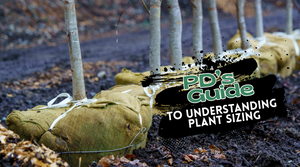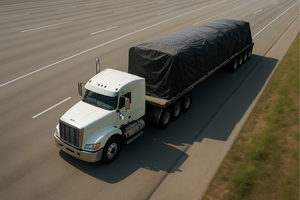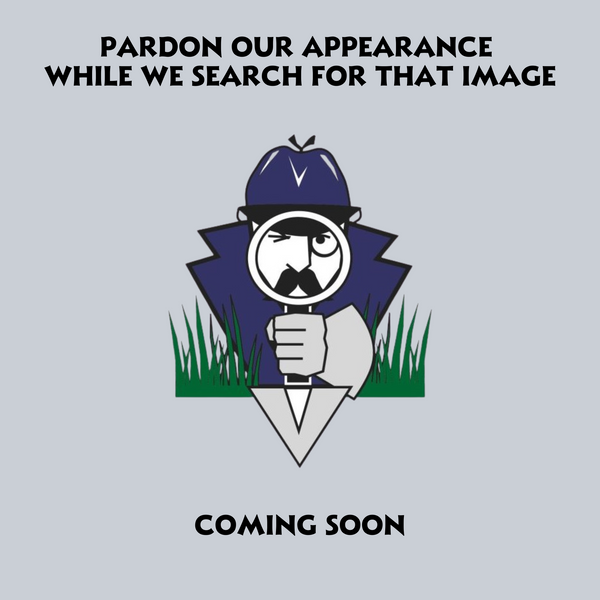Paper Birch
Paper Birch (Betula papyrifera)
Paper Birch (Betula papyrifera), also known as Canoe Birch or White Birch, is a native North American species prized for its distinctive white bark and elegant, open form. This fast-growing deciduous tree is a key component of northern forests and remains a popular landscape choice for its striking bark, golden fall color, and wildlife value. Its natural beauty makes it suitable for both designed landscapes and restoration projects.
Distinctive Features
Paper Birch typically grows 40 to 70 feet tall with a spread of 30 to 40 feet, forming a rounded to irregular crown. As the tree matures, the bark turns bright white and peels in thin, papery layers, providing year-round visual interest. The dark green foliage offers light, dappled shade through summer and transitions to clear yellow in fall. Its bark and branching structure are especially striking in winter against snow or evergreen backdrops.
Growing Conditions
- Sun Exposure: Prefers full sun for best bark development and growth rate; tolerates light shade.
- Soil: Thrives in moist, well-drained soils; tolerates sandy, loamy, and gravelly soils.
- Water: Moderate; requires consistent moisture, especially during establishment and dry periods.
- Humidity: Prefers cooler climates with low to moderate humidity; not ideal for hot, dry sites.
- USDA Hardiness Zones: 2�6; best suited to northern and high-elevation landscapes.
Ideal Uses
- Focal Point Plantings: White bark and golden fall foliage offer seasonal contrast and structure.
- Naturalized Landscapes: Excellent for woodland edges, wildlife corridors, and reforestation.
- Shade Trees: Provides light, filtered shade without heavy canopy coverage.
- Pollinator and Bird Gardens: Supports various native insects and bird species.
- Winter Interest: Peeling bark adds visual texture to snowy or dormant landscapes.
Low Maintenance Care
Paper Birch benefits from the right site placement and consistent care early on. While it�s relatively easy to grow, long-term success depends on proper moisture and protection from pests and heat stress.
- Watering: Keep soil evenly moist during the first few years; mature trees need supplemental watering during drought.
- Pruning: Best pruned in late fall or winter to avoid sap bleeding; remove deadwood and improve structure.
- Fertilizing: Apply a balanced fertilizer in early spring only if growth is poor or soil is deficient.
- Pest & Disease Resistance: Susceptible to bronze birch borer in warmer zones; plant in cooler climates for best performance.
- Winter Care: Naturally adapted to cold winters; bark becomes most brilliant in snowy conditions.
Why Choose Paper Birch?
Paper Birch (Betula papyrifera) combines iconic beauty, ecological value, and a long-standing place in North American landscapes. It brings lightness and contrast to any garden and supports a wide range of wildlife.
- Iconic White Bark: Exfoliating bark adds sculptural interest in all seasons.
- Golden Fall Color: Crisp yellow foliage creates warm seasonal transitions.
- Wildlife Friendly: Hosts beneficial insects and provides nesting habitat for birds.
- Cold Climate Performer: Thrives in northern environments where other trees struggle.
- Culturally Significant: Long valued by Indigenous communities for canoe building and medicine.
Whether used in naturalized settings or as a standout ornamental, Paper Birch is a timeless choice that brings both heritage and elegance to the landscape.

OUR SIZING
Not sure what 2 inch B&B or 30 Gallon Clump really means? This guide breaks down all our plant size terms so you know exactly what to expect, whether you're ordering online or picking up at our nursery. From caliper measurements to container volumes, we've decoded our system to help you shop with confidence.

Plant Detectives Shipping Guide
Nationwide plant shipping made easy. Learn how we ship trees, shrubs, annuals and perennials. No order too big or too small. Fast, careful, and contractor-friendly.

